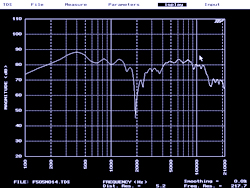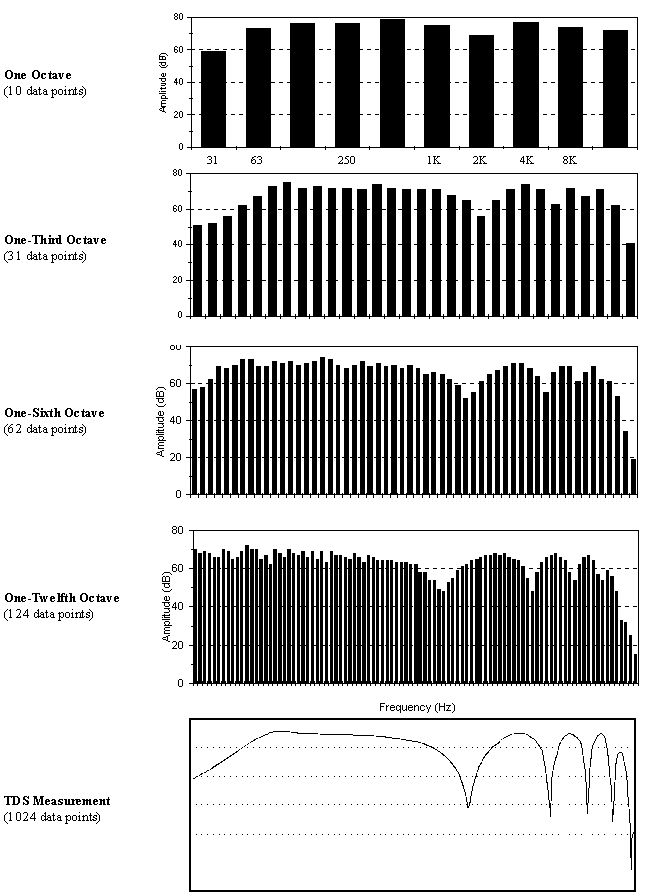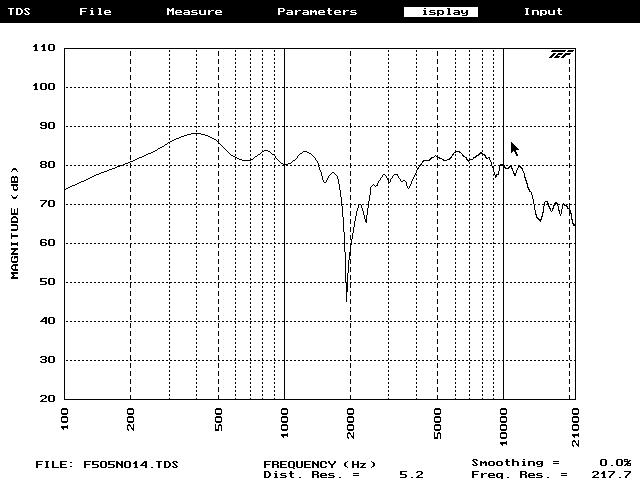
However, most of the low-frequency energy is not aimed at the mic because the low-frequency (LF) driver is omni-directional for most of its passband.
Therefore, if a flat anechoic or direct sound is desired, much more energy must be generated into the room by the LF driver to equal the sound pressure level (SPL) of the HF driver at the mic’s position.
On an RTA display, this will look like the LF is a big haystack, and the HF gradually rolls off toward the higher frequencies where its horn exhibits better dispersion control.
Obviously, this is Boner’s curve. Where the exact hinge-point of the HF roll-off begins—and just how steep the roll-off is—depends on the dispersion of the HF horn, the number of devices, and whether the LF section has any directional control or not.
In a movie theater, where the size and absorption characteristics of the room, number, location, and specs of the loudspeakers are all fixed, a tightly defined curve can be used. For most other sound reinforcement applications, where every room and loudspeaker system is different, the modified power-response curve that produces a flat direct response can vary a lot.
In the days before 3-D measurement systems, one had to vary the hinge-point and roll-off characteristics of the curve until everything sounded right.

This took a lot of time to get a satisfactory result. It had to be done with each individual system until manufactured one or two-box systems (mid-high packs and subs usually) came along.
Time Oriented Events
Let’s shift focus to “non-minimum-phase anomalies.” This $10 phrase describes time-oriented events that cannot be equalized. Examples of this are other delayed sources, like reflections or more distant loudspeakers, which are delayed enough in time to cancel the direct-sound energy from a loudspeaker at particular frequencies (Figure 2) .
Another is the notch at the crossover frequency of a speaker system when the drivers are not time-synchronized (Figure 3). Neither of these frequency-response problems can be remedied by equalization. These are non-minimum-phase events and cannot be fixed with EQ.
This also applies for reverberation or echoes. Even a change in the reverberant nature of a room, due to a change in its acoustical absorption characteristics, is not an equalizable situation.

Yes, I can already hear the protests to this statement: “But I’ve had to change the ‘room EQ’ numerous times when it was equalized empty early in the day, and then didn’t sound right when the room filled with people because it was less reverberant.”
Yes, the EQ had to be changed, but it was not due to reduced reverberation in the room. What had to be accommodated was the effect of temperature and humidity changes on the direct sound from the loudspeakers, not the reverberation. These effects on the direct sound are not time-oriented; rather, they are minimum-phase and can be equalized. Why else would a BSS Omnidrive include a meteorology probe?
Congratulations – you say you’ve gotten a new 3-D, FFT-based measurement system and you’re going to tune a system? Next time, I’ll talk about how to use it correctly and optimally.
John Murray is a 30-year industry veteran who has worked for several leading manufacturers, and has also presented two published AES papers as well as chaired four SynAudCon workshops.
